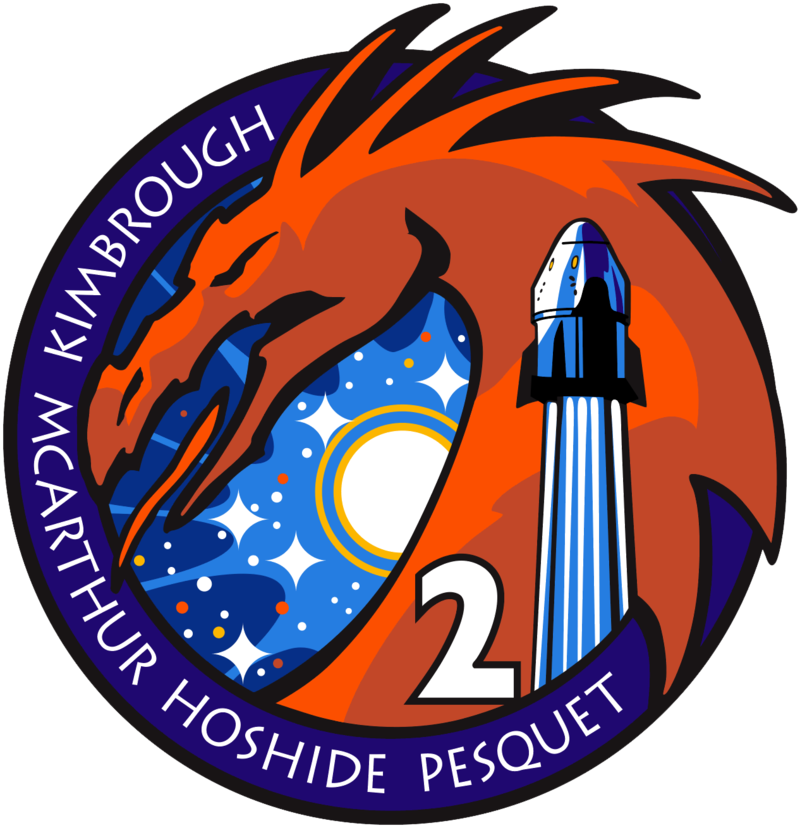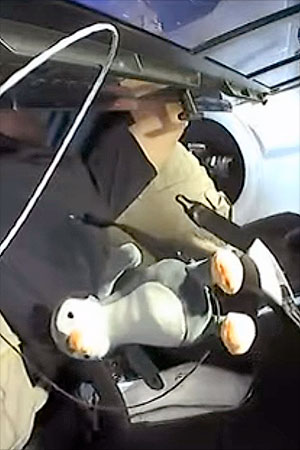
On April 23 at 09:49 UTC, SpaceX’s Falcon 9 lifted Crew Dragon Endeavour into orbit on the SpaceX Crew-2 mission from Launch Complex 39A at the Kennedy Space Center. Onboard were: NASA astronauts Shane Kimbrough and Meghan McArthur, ESA astronaut Thomas Pesquet, and JAXA astronaut Akihiko Hoshide.
For those of you keeping score at home, this was the second flight for both Booster 1061 and Crew Dragon Endeavour. The booster landed safely on the barge Of Course I Still Love You.
After a perfectly nominal launch, the crew set in for a 23-hour rendezvous sequence. The trip to the International Space Station wasn’t quite as nominal as the launch. There was a small piece of debris, likely a piece of ice according to NASA, observed floating out of the Crew Dragon’s trunk. This isn’t great but has been observed before and was not a problem because an object coming from the Dragon itself is at a low velocity relative to the vehicle and wouldn’t damage anything if it did hit the capsule.
There was also a more significant event during rendezvous: a small chance of colliding with space debris. Astronauts train for all sorts of scenarios, so the crew got back in their pressurized suits just in case. Fortunately, the object passed without incident. According to a NASA spokesperson after the event, the object was 45 kilometers away from the spacecraft, and there was no risk of collision.
Some happier news in the rendezvous was the reveal of the Crew-2 zero-G indicator. Continuing the Soyuz and Shuttle tradition, astronauts riding on Crew Dragon (or rather their kids) chose a small toy to serve as a visual reference to when the crew is experiencing weightlessness. The toy chosen by the children of the Crew-2 astronauts was a small penguin named GuinGuin. Good luck getting one for yourself to add to your Zero-G Indicator collection; as soon as the penguin was shown on the broadcast, it was immediately sold out.

The crew finally docked to International Docking Adapter-2 on the forward port of Node 2 at 09:08 UTC. After two hours of leak checks, the hatch on the Crew Dragon was opened, and the four astronauts came on board, bringing the total station crew temporarily up to eleven. With that many people on board, it is a little cramped. Reminder: there are only six full sleep stations on the ISS for eleven people. The current sleeping arrangements remind me of a slumber party: find a spot and roll out your sleeping bag. The commanders of the two Crew Dragons sleep in their capsules, and the remaining three crew members attach their sleeping bags to wherever they can find space.
This flight sees the number of crew members on the ISS stay at the level set by Crew-1, which increased it from six to seven last year. This allows for more crew time spent on science rather than maintenance of the 23-year-old station. Specifically, the crew will continue the Tissue on a Chip investigation. According to NASA, the [t]issue chips are small models of human organs containing multiple cell types that behave much the same as they do in the body.

The crew will also monitor the arrival of several uncrewed spacecraft such as SpaceX’s Cargo Dragon, Northrup Grumman’s Cygnus and the uncrewed test flight of Boeing’s crewed Starliner spacecraft.Pesquet, Hoshide, Kimbrough, and McArthur will also conduct several spacewalks to install new solar panels on the ISS that will arrive on SpaceX CRS-22 in July 2021.
And just like how Crew-2 arrived before Crew-1 departed, Crew-2 will depart after Crew-3 arrives, which is currently scheduled for October 2021. Crew-1 will return to Earth as early as Friday, April 30th, so we should have a full report for you next week.
More Information
NASA press release
SpaceX’s Spacecraft Just Had a Near Collision With an Unidentified Object (Futurism)
‘GuinGuin,’ the flying penguin, revealed as Crew-2 zero-g indicator (Collect Space)
Crew Dragon Docks to Station Day After Launch (NASA)
Launch video




 Join the Crew!
Join the Crew!
 Escape Velocity Space News
Escape Velocity Space News
0 Comments